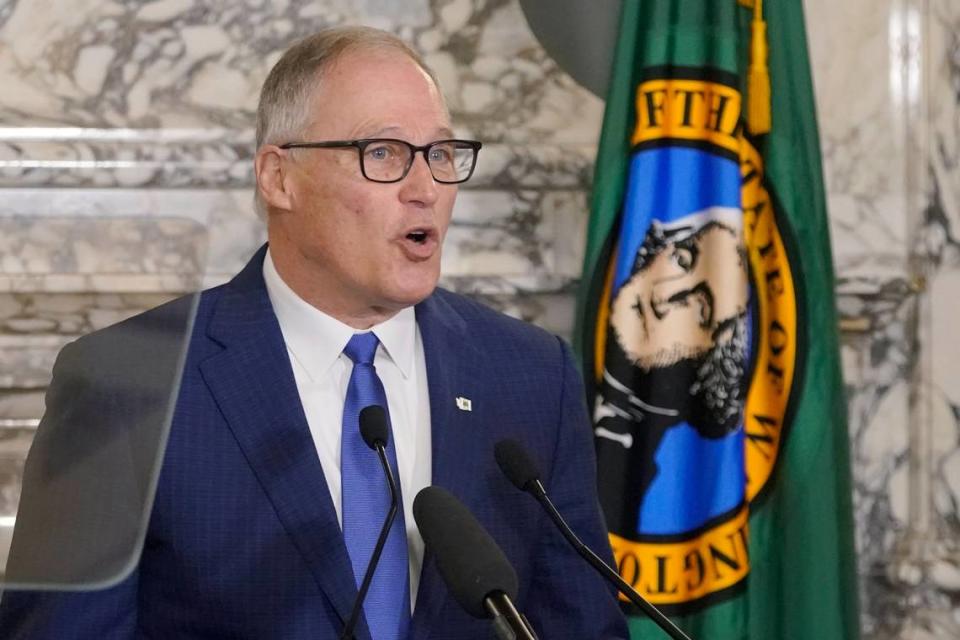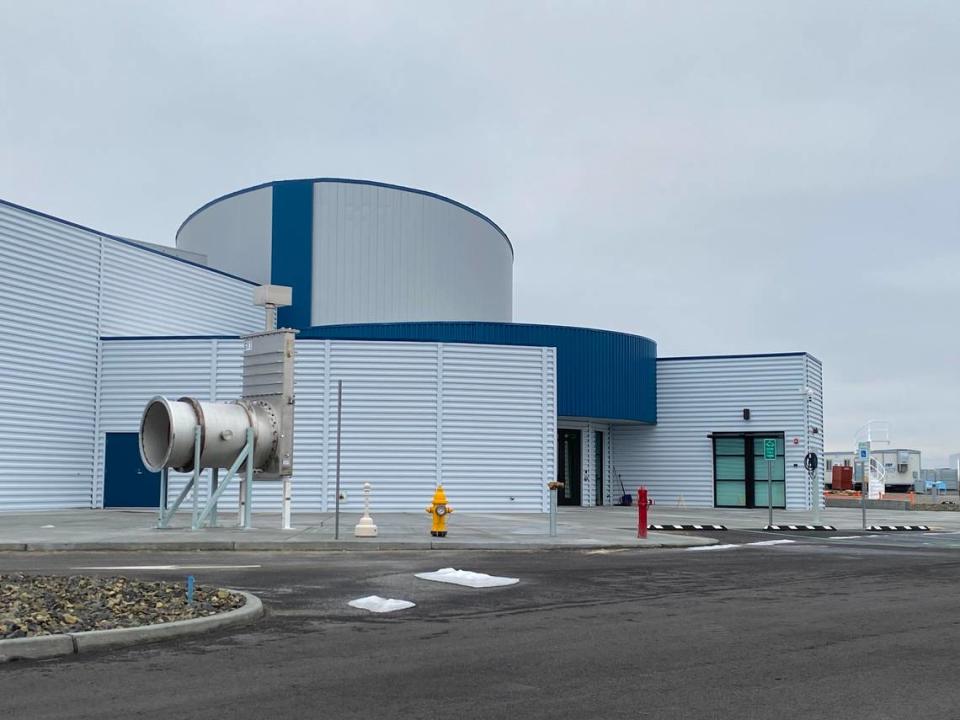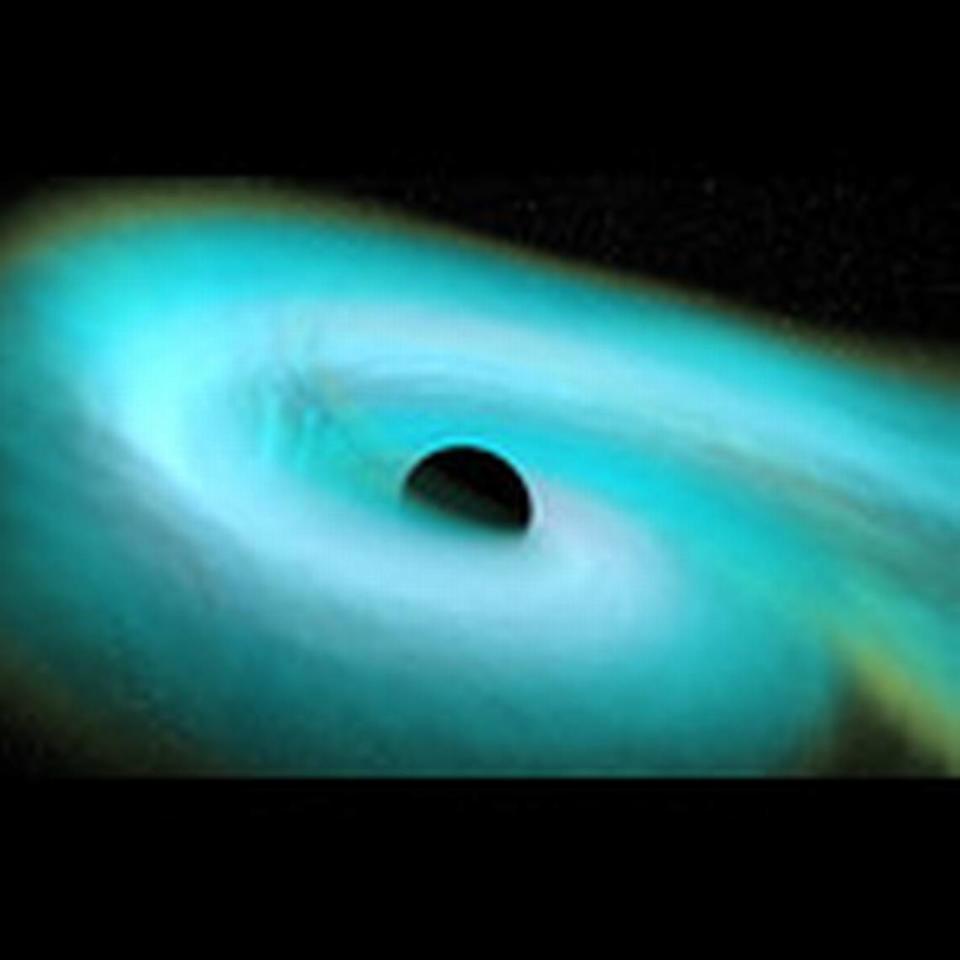Gov. Inslee to visit Tri-Cities. Is it too soon after he tested positive for COVID?
- Oops!Something went wrong.Please try again later.
Gov. Jay Inslee is scheduled to visit the Tri-Cities on Thursday, June 2, for the grand opening of the LIGO Exploration Center and a briefing on Hanford site environmental cleanup.
But plans were made before he tested positive for COVID-19 this week on May 25, and had what he described as “very mild symptoms.”
His staff has pointed out that the guidance for the governor’s office allows employees to return to work five full days after a positive test if their symptoms are improving and they have no fever for 24 hours.
That is in line with recommendations of the Centers for Disease Control and Prevention.
But the CDC also recommends that people who have tested positive for COVID-19 not travel in the U.S. until a full 10 days after their symptoms started.
Currently, the rate of confirmed new COVID-19 cases is higher in Western Washington than in the Tri-Cities area.
“It is entirely possible that next week’s visit is canceled,” Mike Faulk, the governor’s deputy communications director, told the Tri-City Herald on Friday morning. “The governor’s team just has not made that call yet.”

Faulk said the governor “is not doing or saying anything that would put him above CDC recommendations.”
Inslee has said that the past restrictions he put in place — including mandatory face masks in public places and temporarily closing restaurants to indoor dining — helped suppress the coronavirus and kept Washington’s COVID-19 death rate well below the nation’s average.
The trip, as planned now, includes speaking at the grand opening of the LIGO Hanford Observatory’s new Exploration Center.
The event is not open to the public.
New LIGO center
The new 5,000-square-foot center was paid for with an $8.1 million grant from the state of Washington.
It will serve as a hub for all visitors, including up to 10,000 students on field trips each year, to the Advanced Laser Interferometer Gravitational-wave Observatory on unused Hanford nuclear reservation land just north of Richland, Wash.

About 50 hands-on or interactive exhibits related to LIGO science and engineering are planned.
“Previously, we had been hosting 3,000 to 4,000 K-12 students a year, in addition to bringing our scientists into classrooms,” said Amber Strunk, education and public outreach lead at LIGO Hanford Observatory. “
“But with the growing interest in LIGO and its ongoing discoveries, we wanted to reach and inspire even more students of all ages,” she said.

The LIGO Hanford observatory and its twin in Louisiana made scientific history in 2016 when they announced they had detected gravitational waves passing through Earth for the first time, confirming Albert Einstein’s theory of relativity.
Since then LIGO Hanford or its associated observatories have detected ripples in space and time created by dozens of violent events in space, including 35 between November 2019 and March 2020.
They have included collisions between black holes, neutron stars and, much more rarely, neutron stars and black holes.

Hanford site tour planned
While in town, Inslee also had requested a Hanford site tour and briefing.
Washington state officials have been concerned that the federal government has been underfunding environmental cleanup at the nuclear reservation, delaying work and increasing costs.
The 580-square-mile site has 56 million gallons of radioactive waste in underground tanks, some of them prone to leaking; buried radioactive waste; and contaminated groundwater, soil and buildings.
The Department of Energy has estimated that cleanup yet to be completed will cost taxpayers an estimated $300 billion to $640 billion.

